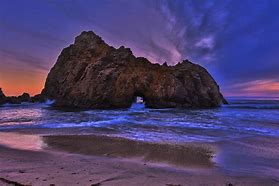 For those looking for adventure, or a chance to reconnect with nature, solo camping in the United States is a fulfilling experience.
For those looking for adventure, or a chance to reconnect with nature, solo camping in the United States is a fulfilling experience.
Pick a location such as Yosemite National Park in California or Rocky Mountain National Park in Colorado, and acquaint yourself with basic skills such as campfire building, tent setup, navigation, obtaining water, and campground arrangement.
Remember to start small, leave no trace, carry a first aid kit, and notify someone about your plans if you are concerned about wildlife. Camping alone enables you to escape from daily life and establish a connection with the natural world.
What are some solo camping destinations in the USA?
- Rocky Mountain National Park, Colorado:
Rocky Mountain National Park is a great place to camp alone because of its lush woods, alpine lakes, and high mountain peaks.
There are more than 300 backcountry campsites where you can find a quiet place to stay under the stars.
- California’s Yosemite National Park:
Yosemite has some of the top hiking routes in the nation.
A must-see is the Yosemite Falls Trail, which offers stunning vistas of El Capitan and Half Dome as well as opportunities to see wildlife.
- Alaska’s Denali National Park:
Visit Denali for an incredibly wild experience. It is ideal for lone adventurers because of its huge wilderness, difficult terrain, and profusion of wildlife.
Discover the tundra, look for grizzlies, and be in awe of Denali, the highest peak in North America (previously
- Big Sur, California:
Big Sur is a beautiful place in California with amazing views of the ocean and big trees. It’s great for camping alone.
You can camp on the cliffs, walk on famous trails, and enjoy nature.
- Acadia National Park, Maine:
Acadia is in Maine and has rocky shores, tall mountains made of rock, and calm lakes. It has lots of different landscapes.
You can climb Cadillac Mountain or explore the special roads made for walking or biking alone.
- Great Smoky Mountains National Park, Tennessee:
The Smoky Mountains are in Tennessee. They have foggy forests, waterfalls, and old houses.
You can set up a tent near Cades Cove and enjoy the peace.
- Joshua Tree National Park, California:
Joshua Tree is in California and has a strange desert landscape. It’s great for exploring alone.
You can camp among the interesting Joshua trees, walk to secret places with water, and look at the stars at night.
- Olympic National Park, Washington:
Olympic is in Washington and has rainforests, rough coastlines, and mountains with snow on top.
You can explore the Hoh Rain Forest or camp near the beautiful Ruby Beach.
- Yellowstone National Park, Wyoming:
Yellowstone is in Wyoming and has geysers, hot springs, and lots of animals.
Camping alone here lets you enjoy everything the park has to offer.
- Grand Teton National Park, Wyoming:
Grand Teton is in Wyoming and has big mountains that look nice in lakes.
Rocky Mountain National Park, Colorado:
You can walk on trails, go boating on Jenny Lake, and camp alone.
What are the best times of year to visit these parks?
Rocky Mountain National Park, Colorado:
June through August is the best time of year for hiking, wildflower blooms, and beautiful sky. Higher altitudes see snowmelt, which opens up trail access.
Autumn (September to October): Take in the sight of golden aspen leaves and relish the drop in temperature.
Steer clear of winter (November through April): The snow and chilly weather make camping difficult.
Yosemite National Park, California:
Spring (April to June): Snowmelt brings forth the greatest waterfalls. less people than in the summer.
Autumn (September to November): Less crowds, mild temperatures, and beautiful foliage.
Steer clear of Summer (July–August): Parking is scarce and trails are crowded.
Denali National Park, Alaska:
Summer (June to August): Extended daylight, opportunities to see wildlife, and unobstructed roadways.
Fall (September): Less tourists and beautiful fall foliage.
Avoid Winter (October through April): severe conditions and few services.
Big Sur, California:
Springtime brings with it wildflowers, nice weather, and less people (March to May).
Fall: Clear skies and mild temps (September to November).
Steer clear of June to August is summertime, which means congested roads and little parking.
Acadia National Park, Maine:
Summer (June to August): Hiking, beautiful roads, and warm weather.
Autumn (September to October): Magnificent greenery and reduced crowds.
Steer clear of Winter (December to March): Access is made difficult by the cold and ice.
Great Smoky Mountains National Park, Tennessee:
Spring (April to June) brings with it lush vegetation, pleasant temperatures, and wildflowers.
Autumn (October to November): Clear, crisp air and spectacular autumn colours.
Avert Summer (July to August): High humidity and crowds.
Joshua Tree National Park, California:
Autumn (October to November): Ideal hiking and stargazing temps.
Spring brings blooming desert vegetation and warmer temperatures (March to May).
Steer clear of Summer: intense heat (June to August).
Olympic National Park, Washington:
June through August is the season for hiking, beachcombing, and rainforest exploration.
Autumn (September to October): Less tourists and beautiful autumn foliage.
Steer clear of Winter (November to February): Limited access and a lot of rainfall.
Grand Teton National Park, Wyoming:
Summertime activities include boating, hiking, and wildlife photography (June to August).
Fall (September to October): Less people and beautiful fall scenery.
Steer clear of Winter (November through April): severe weather and few amenities.
What should I pack for a solo camping trip?
Personal gear for camping includes a tent,
sleeping bag, sleeping pad, clothing, hiking boots, trail shoes, socks,
hats, gloves, cooking and food, navigation, safety, first aid kit, multi-tool, and personal items like toiletries, sunscreen, sunglasses, and emergency contact information.
Personal items like toiletries, sunscreen, sunglasses, and a multi-tool are essential for safety. Personal items like a backpack, camp shoes, trash bags, camera, smartphone, and book or journal are also essential for comfort and safety during camping.
What are some common mistakes to avoid during solo camping?
Mistakes in camping include choosing a remote location, not keeping someone informed, not carrying essential safety gear, not testing equipment before leaving, and leaving food and garbage accessible to wildlife.
To avoid these mistakes, consider a balance between solitude and accessibility, share your itinerary with someone reliable, pack a first-aid kit, and test your equipment before leaving. Proper storage and disposal of waste can also help prevent wildlife damage.
conclusion
solitary camping in the United States provides a special fusion of nature connection, adventure, and self-discovery. You may have an amazing solo camping journey by picking the ideal spot, travelling light, putting security first, and avoiding common mishaps.
The vast outdoors is patiently awaiting for you to discover it, whether that’s the wild wilderness of Alaska, the peaceful coasts of California, or the rocky peaks of Colorado.


